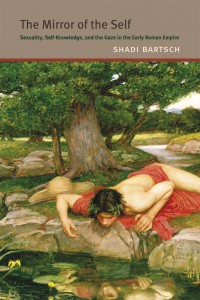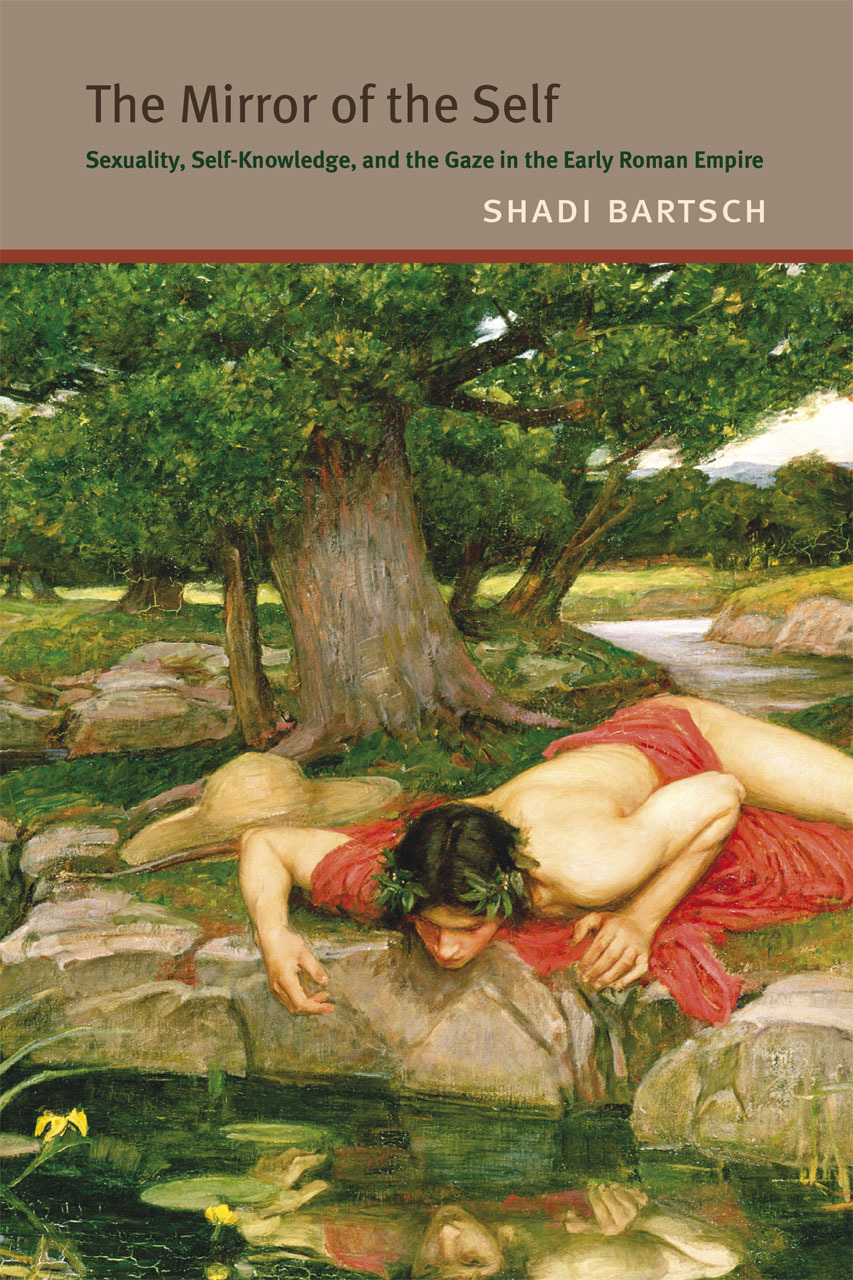 The Mirror of the Self: Sexuality, Self-Knowledge, and the Gaze in the Early Roman Empire
The Mirror of the Self: Sexuality, Self-Knowledge, and the Gaze in the Early Roman Empire
by Shadi Bartsch
University of Chicago Press.
325 pages, $45.
SHADI BARTSCH traces the development of Platonic theories about “boy-love” from ancient Greece to imperial Rome. The term “boy-love,” however, is misleading: it implies love of a child no older than twelve, whereas the Greeks preferred adolescents, eromenoi. The distinction is important because of the mistaken belief, seen everywhere in current discussions of sexuality, that pederasts are the same as pedophiles, attracted to pre-pubescents. Erastes, usually young men who partnered with eromenoi, were not pedophiles.
Having undergone a long and tortuous evolution in the Platonic Academy and among the early Stoics, conceptions of pederasty changed further when Panaetius and Posidonius introduced Stoicism to the Romans. The gravitas, dignitas, and manliness of the Republican patres familias, Rome’s stern-minded elders, could not accommodate the pederasty of the Greeks. These patres maintained a posture of austere masculinity and warrior prowess when displaying themselves in public as orators or triumphant generals, their bodies inviolable, a status distinct from that of public figures such as actors, gladiators, and other infames. The patres could not conceive of their sons as eromenoi. It would have destroyed the notion of bodily inviolability.
To curry favor with the Roman elite, Greek importers of Stoicism obligingly cleaned it up, omitting references to pederasty so praised by Zeno and Chrysippus, the Hellenistic founders of their school. Cicero in his eclecticism adopted this attitude, and Seneca, whom Bartsch overestimates, took it to a further extreme. The process reminded my late collaborator Warren Johansson of what happened when Jewish psychoanalysts, fleeing the Nazis, imported Freudianism into the United States. To ingratiate themselves with Bible-thumping Americans, these German-speaking outsiders introduced to Freudianism a harsh condemnation of homosexuality that the founder did not share. (In addition to the famous letter to an American mother reassuring her that she need not take steps to alter her son’s homosexuality, Freud had written a letter to a Viennese newspaper saying much the same. Johansson discovered this letter and sent a copy to England’s Wolfenden Commission, then deliberating decriminalization of homosexuality. The Commission took due note.)

A critical dispute among classicists that Bartsch ignores to her peril is the average age of first marriage for Romans and its implications for Roman as opposed to Greek homosexualities. Traditionalists hold that Romans in fact married young, males at around eighteen and females at fourteen-and-a-half on average. The Greeks, on the other hand, at least after 620 BCE, generally delayed marriage, with males waiting until about thirty, which provided for a prolonged period for eromenoi-erastes pairings. Females usually married at about sixteen but in Sparta by law not until eighteen, allowing them to develop physically and emotionally in a way that did not happen in other ancient societies, where girls tended to marry at puberty. Recently, scholars led by Richard Saller (Patriarchy, Property and Death in the Roman Family, 1996) and Brent Shaw have suggested that Roman males in fact married at 28, which, if true, would have given them the same opportunities for homosexual love the Greeks had. Lelis et al. (in The Age of Marriage in Ancient Rome, 2003) have disproved these revisionists. The hypothesis of late marriage ages for Romans does not hold water under close scrutiny.
Another scholarly controversy concerns the Roman law known as the “lex Scantinia.” Recently, some classicists, such as Beert Verstraete and Vernon Provencal (eds., Same-Sex Desire and Love in Greco-Roman Antiquity and in the Classical Tradition of the West, 2006) and Eugene Rice (GLBTQ.com), have claimed that it prohibited any free Roman male from being sexually penetrated. Fortunately, Bartsch is not persuaded by this revisionist claim and follows Craig Williams’ authoritative Roman Homosexuality: Ideologies of Masculinity in Classical Antiquity (1999), maintaining instead, like all pre-World War II scholars, that the sparsely attested lex Scantinia imposed no such blanket prohibition on Roman males of the citizen class. Free youths and subordinate citizens were of course protected from unwanted or violent homosexual advances by laws about stuprum. If the lex Scantinia had prohibited all penetration, as the revisionists falsely claim, Roman homosexuality would have been vastly different from what it was.
Like a number of other books published by Chicago, The Mirror of the Self is not likely to become a bestseller, replete as it is with such sentences as this:
Ethical theorists critical of this modern tendency, such as Alasdair MacIntyre (1981) and Bernard Williams (1985), along with Gill himself, have suggested that a more appropriate way of understanding the normative ancient self (and its anticipation of new, non-Cartesian descriptions of selfhood in the present day) is to recognize the role of interpersonal and communal relationships in its formation and its moral judgments. Following this line of thought, Gill would reject what he calls the “subjective-individualist” tradition of thought about selfhood and substitute an “objective-participant” model.
As the acknowledgments note, many experts have combed through this text, and as far as I can see it is free of factual error. It does, however, risk putting nonspecialists to sleep. Most will not plow through quibbles with such scholars as Françoise Frontisi-Ducroux, Christopher Gill, A. A. Long, and, of course, Michel Foucault, of whom Bartsch says:
The general trajectory of The Care of the Self, too, describes a very different arc from the one of this book. Where I have stressed the de-ethicalization of boy-love in the Roman world, Foucault goes further to argue that this shift in emphasis, along with the new technologies of the self, strengthened the valorization of the marital bond in early imperial Rome in general, leading to “the existence of a ‘heterosexual’ relation marked by a male-female polarity.”
I personally learned a lot from The Mirror of the Self—more, I must confess, than I ever wanted to know about “the gaze,” a subject less tediously handled by John Clarke and Thomas Hubbard. Bartsch says next to nothing about types and frequency of actual sexual behavior, whether homo or hetero. Though she doesn’t say so, by the late Republic Roman matrons and especially widowed mothers were freer and better off than those in any other ancient society. A queer thing about Bartsch is her almost total neglect of women (except Sappho and Medea). If a male author had been guilty of such one-sided treatment, he would surely have been excoriated, but far be it for me to complain about undue attention to men and their sexuality.
William Percy III is a professor of history at U. Mass.-Boston.






